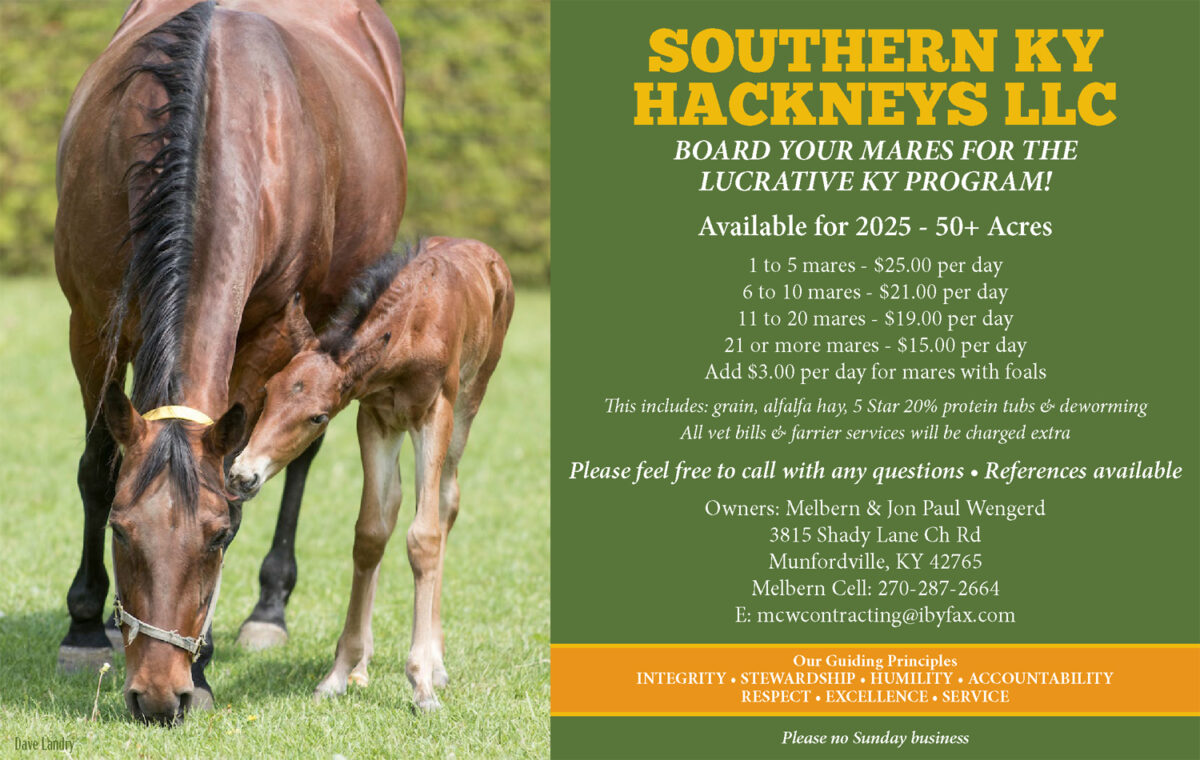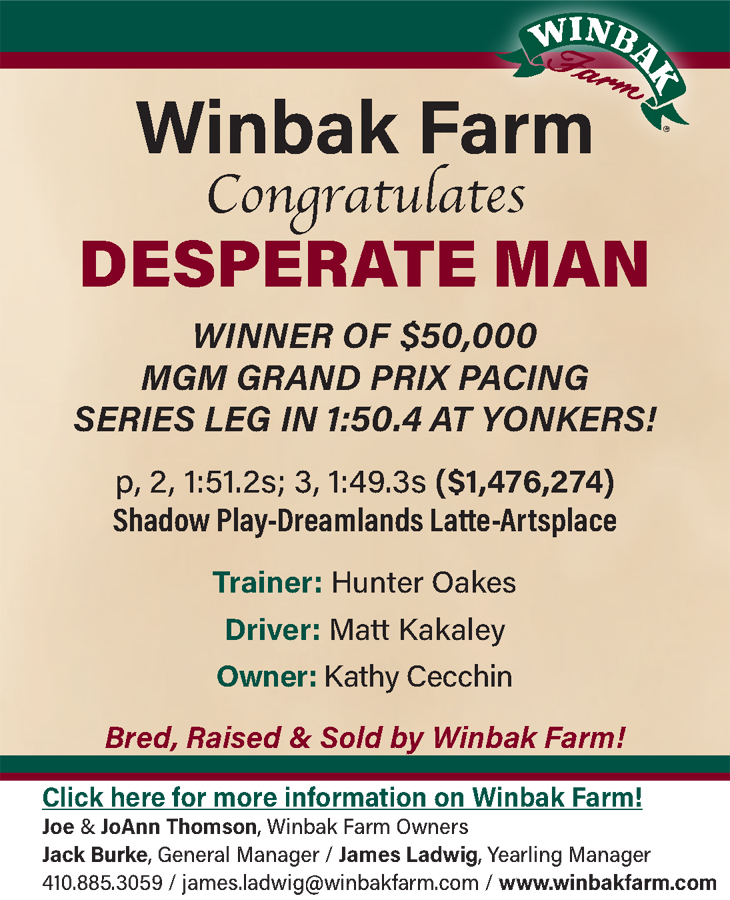Everything you need to know about Super Bowl
by Bob Heyden
Bear with me a bit. For 51 weeks of the year this won’t fly. But for Super Bowl Week, I will empty the briefcase on the table. Thanks for the patience.
Super Bowl — the horse
Foaled in 1968, the same year the Jets made it to Super Bowl III on January 12, 1969.
The 1969 game was the first one referred to as the Super Bowl. The 1967 Packers-Chiefs and 1968 Packers-Raiders games were the “AFL-NFL Championship Games.”
The trotter named Super Bowl raced from 1971-1972 out of Stanley Dancer’s barn. He was tied for fifth in the Horse of the Year balloting in 1971.
His stablemate, Albatross, was the HOY in both 1971 and 1972.
Super Bowl was second in the HOY balloting in 1972 and won the Trotting Triple Crown setting five world records on Hambletonian Day.
He retired 38-for-51 and was the 1972 Trotter of the Year. That marked only the second time that a pacer and a trotter had gone 1-2 in HOY balloting. A decade earlier, Dancer did the same with Su Mac Lad and Henry T Adios (1962).
As a stallion, Super Bowl sired six Hambletonian winners (two before the Bengals’ last appearance in the 1988 Super Bowl — four after). Only his sire, Stars Pride, did better with 8.
The Super Bowl-sired Hambletonian winners were:
1979 — Legend Hanover
1982 — Speed Bowl with Tommy Haughton, who is still the youngest to win the Hambletonian final at age 25. Two years earlier, Tommy became the youngest to win a heat with son of Super Bowl (Final Score).
1989 — Probe was part of the legendary dead heat with Park Avenue Joe.
1991 — Giant Victory — Yes, the same year the Giants beat the Bills in the Super Bowl
1993 — American Winner (over Pine Chip, who was voted Trotter of the Year).
1995 — Tagliabue was the sixth and final son of Super Bowl to win the Hambletonian. (Super Bowl had the favorite in 1992, the filly Armbro Keepsake finished fourth).
Super Bowl was 25 years old when had his last Hambletonian credit.
Super Bird
Who is Super Bird and why was he included here?
Super Bird was the nickname of Albatross (sire of the winner of the first million-dollar race, Niatross).
Albatross was a stablemate to Super Bowl. Yes, he could fly, and he was the sport’s first sub-1:55 race winner at both 3 and 4. He was the sport’s first million-dollar winner covering two straight seasons (1971-1972).
Both he and Super Bowl set the all-time single season records for any age as sophomores — Super Bowl ($436,258) in 1972 and Albatross ($558,009) in 1971.
This year marks the 50th anniversary of this epic duo racing together — going 1-2 in HOY balloting something that would not be repeated by stablemates for 40 years until Linda Toscano did it in 2012 with Chapter Seven and Market Share.
Albatross was 59-for-71 career, Super Bowl 38-for-51. The combined record for Albatross and Super Bowl in 1972 was 48-for-56.
No wonder they got 182-of-191 votes cast for HOY between them.
Albatross was the division winner in all three years he raced, his 2-year-old season under the tutelage of Harry Harvey and then to Dancer.
Super Bowl also won his division both seasons on the track at 2 and 3.
Together, they won 5-of-6 Triple Crown races between them.
Enter Hanover Shoe Farms. Super Bowl arrived three weeks ahead of Albatross.
The #1 standardbred farm in the world would be the home for these two for the next quarter century. Side by side again. Neither ever knew any other home.
Super Bowl, the first sire to have three Breeders Crown winners in a single year (1985) was still active in 1997 (94 mares). He died on October 2, 1998.
Albatross made it to August 5, 1998 — at age 30.
They dominated in the stallion ranks. With their first crops stepping onto the track the same year the Meadowlands opened, both rose to the top of the breeding ranks (Super Bowl and Speedy Crown as a unique siring tandem) No one has ever surpassed the $75,000 Albatross siring fee and nobody has ever had three straight Horses of the Year with two different horses — 1979-1980 Niatross and 1981 Fan Hanover.
Super Bowl and his sire Stars Pride combined for 14 Hambletonians.
No trotting sire and no pacing sire have ever had more foals than these two who could not be, and would not be, separated both on and off the track.
They were even 1-2 in Hall of Fame honors. The Living Horse Hall Of Fame started in 1996. Albatross was inducted year one, Super Bowl in year two.
Football and racing
Ken Stabler, the 1976 Super Bowl winner with the Raiders, was part of the “George Plimpton Challenge” and made it to the Meadowlands in 1987.
Willie Lanier was a great middle linebacker for the outstanding KC Chiefs games of the 1970s. He was at the Big M several times.
Richard Caster, the tight end for the NY Jets, participated in the Celebrity Challenge races.
Joe Namath was at the Meadowlands on opening night in 1976 with his agent and the man most responsible for the advent of night harness racing in New Jersey — Sonny Werblin.
Paul McGuire, NBC football announcer, was a good friend of the sport of racing and a participant in some amateur events.
Wellington Mara and Leon Hess, owners of the NY Jets and NY Giants. Never will I forget them coming into the press box at the Meadowlands together from the President’s Room to make a $2 bet — each!
Redskin, the 1987 Messenger winner, was and is the all-time highest-earning 2-year-old ever at $1.407 million in 1986.
Drop The Ball, the outstanding filly for Eric Cherry, actually tried her hand in the 2011 Meadowlands Pace elims versus the boys.
Wayne Chrebet — Talk about of the good guys. He was a fan favorite receiver for the NY Jets and an avid harness owner.
Fake Left, the 1992 Little Brown Jug winner was part of a one-time Meadowlands-only happening. Two $100 horses, one night, same driver, same track. Cat Manzi July 31, 1991. Manzi got them both home — $191 for Fake Left then a 2-year-old and $100.60 for Hundred Kisses, who a few years later celebrated the Jug and the entire Triple Crown with her son Blissfull Hall.
Look here
Super Bowl 56 — Feb. 13, 2022. Dave Palone turns 60.
These are Palone’s lifetime numbers as of Feb. 10:
76,791 starts, 19,856 wins, $151,342,736.
Yes, the countdown to 20,000 is well underway.
The first NFL passer to reach 20,000 yards was Sammy Baugh (1950 — 20,630).
Herve Filion was the first to drive 20,000 times.
Speaking of Filion, Palone broke Filion’s record for wins as a driver with his 15,181st on July 5, 2012 at The Meadows (Herculotte Hanover).
Palone hit 15,000 just six weeks after turning 50 that year.
He won his first race the same year the Bengals debuted in the Super Bowl in 1981.
Palone went into the Hall Of Fame in 2010.
He became the world’s driving leader in November, 2014 with his 16,754th victory.

















